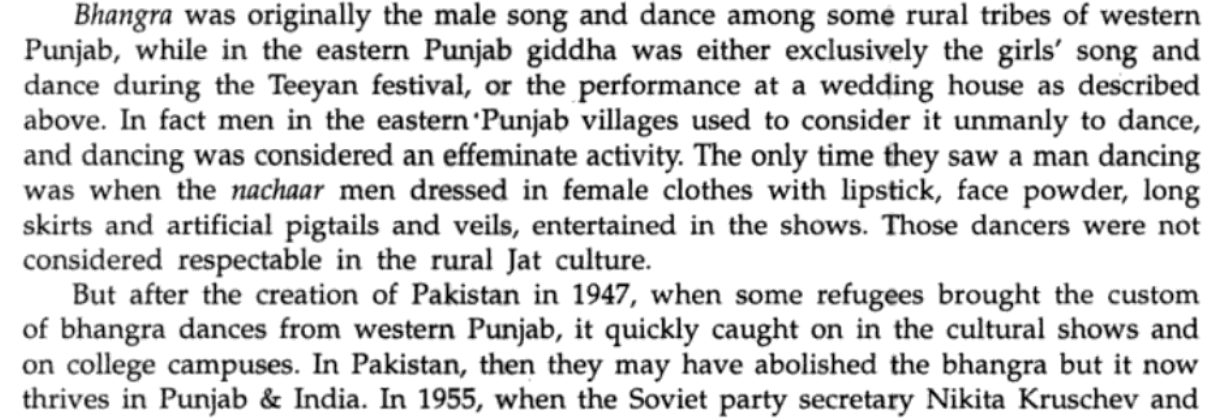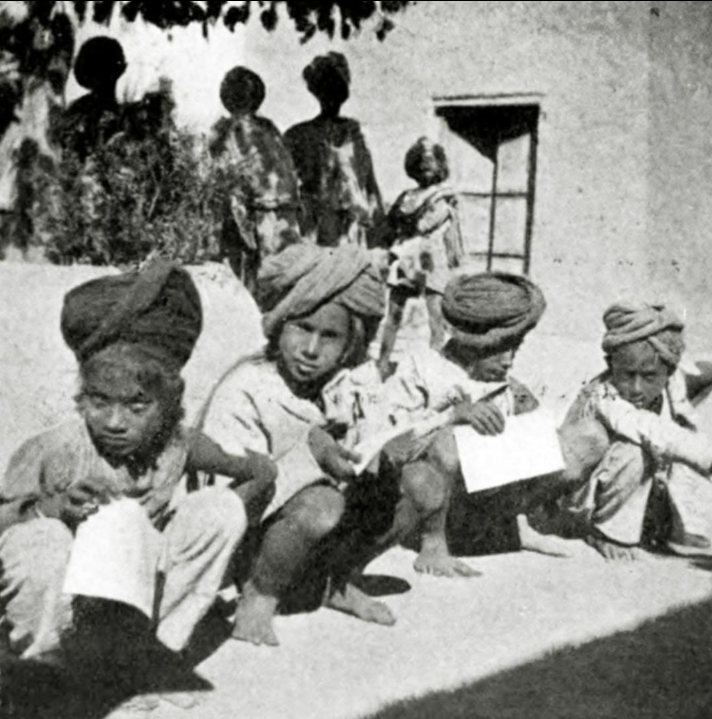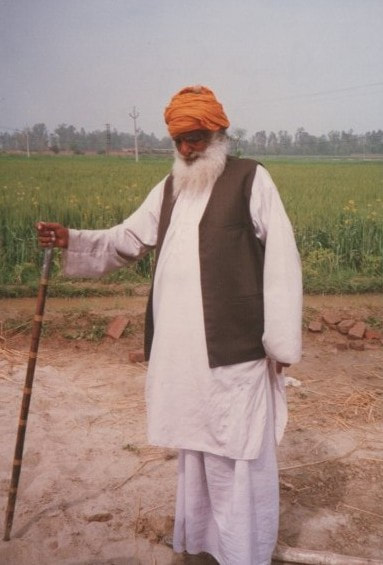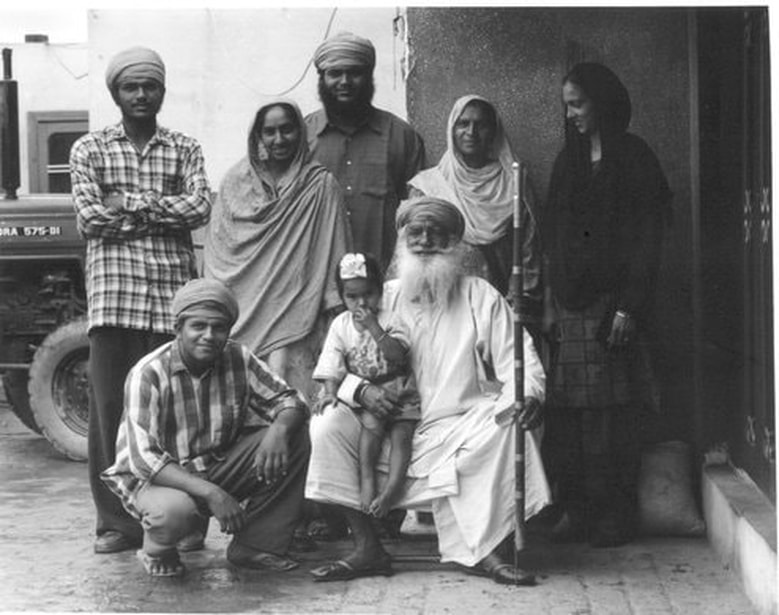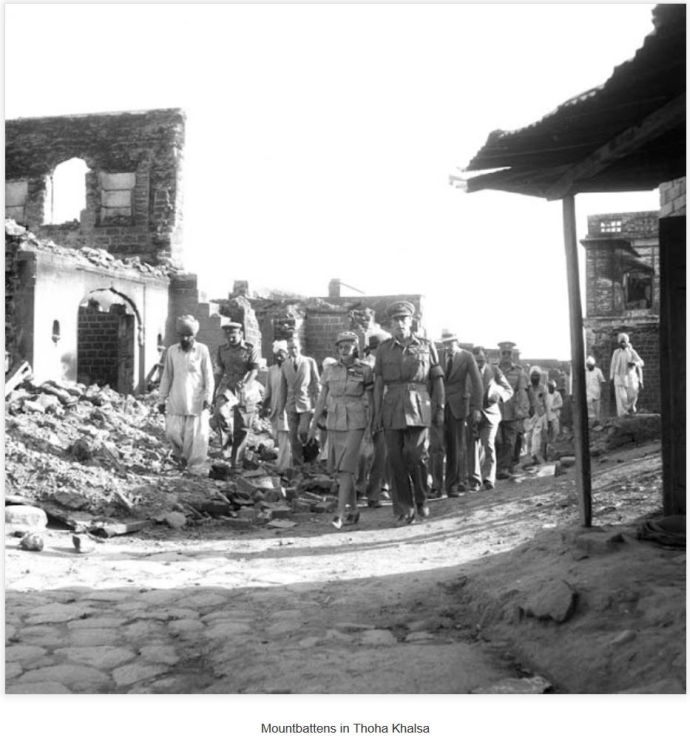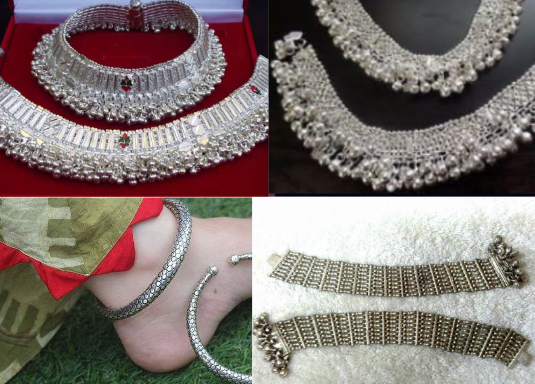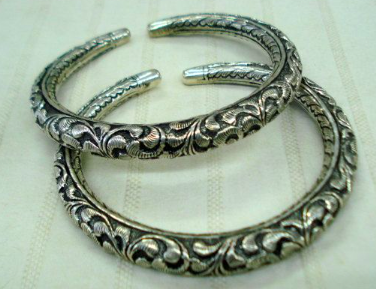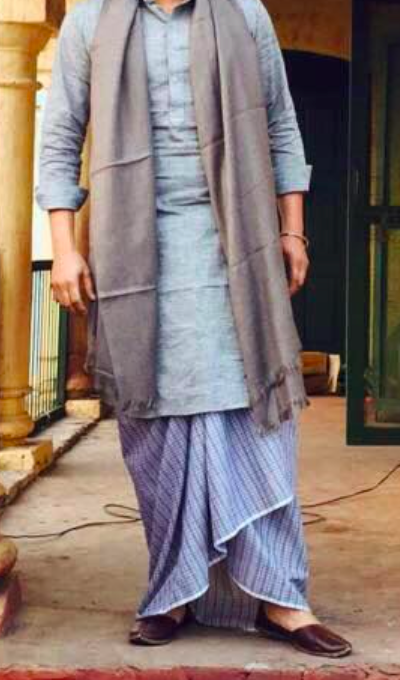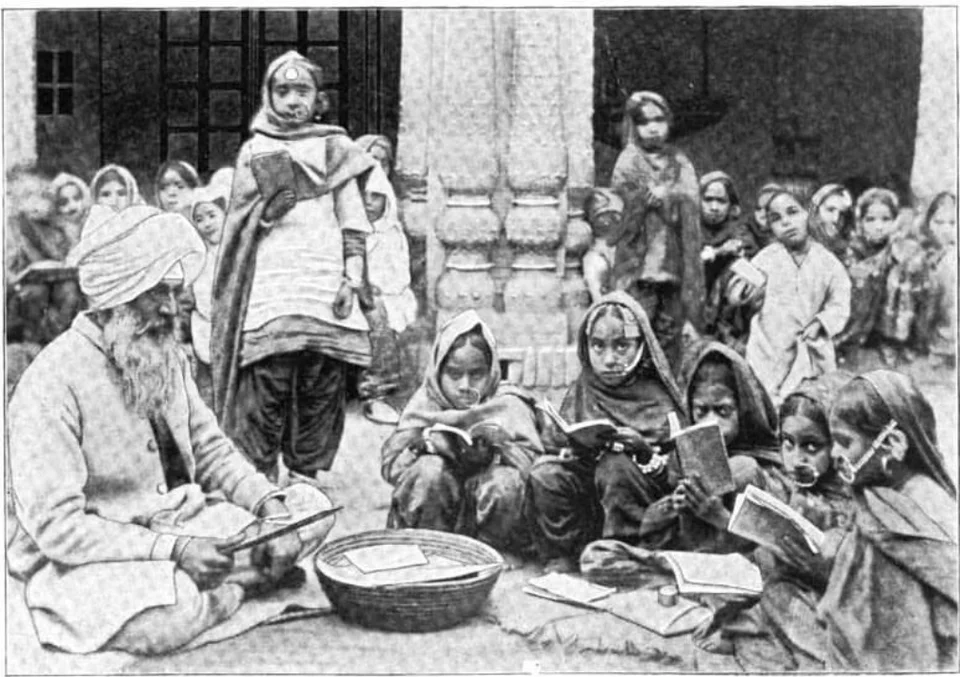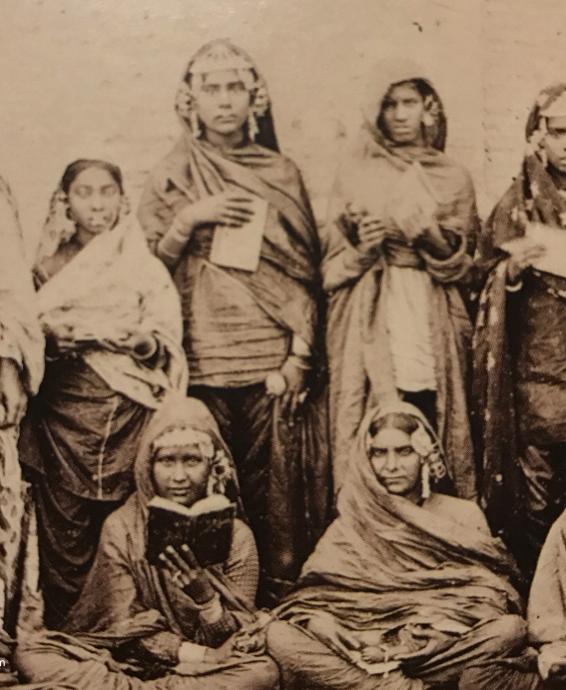
5aaban
Members-
Posts
466 -
Joined
-
Days Won
4
Content Type
Profiles
Calendar
Forums
Everything posted by 5aaban
-
Origins of Bhangra culture from "East of Indus" by Gurnam Singh Sidhu Brard (the author was born in 1930, Patiala state). This is how Bhangra made its way into Panjabi culture.
-
I have noticed these names are coming back into trend. And names like Fateh and Ekam are very common too.
-
They are probably following standard Hindu/Indian names. There's also an Indian cricketer named Hardik Pandya, maybe they're fans? I don't think they realise what the names mean. A few prefix/suffix Panjabi names can also end up sounding weird! That's why I believe traditional Sikh/Panjabi names were best prior to this suffix/prefix trend.
-
There were huge protests around India and many Sikhs helped protestors and very vocal about opposing the bills some years back. But why exactly did Sikhs oppose NRC & CAA? Wouldn't that bill be beneficial to Sikhs? Since it granted a swifter path to Indian citizenship under the assumption of religious persecution to any individual belonging to the specific minorities of Hindus, Sikhs, Buddhists, Jains, Parsis and Christians from Afghanistan, Bangladesh and Pakistan, who entered India on or before 31 December 2014. According to the Intelligence Bureau, the immediate beneficiaries of the new law would've been 25,447 Hindus, 5,807 Sikhs, 55 Christians, 2 Buddhists and 2 Parsis. I believe the main reason for the protests were the Act didn't mention Muslims and did not offer the same eligibility benefits to Muslim immigrants from those 3 nations. I don't understand why Sikhs got involved, because those countries are already Muslim-majority.
-
Geopolitics - what is going on in the world
5aaban replied to Premi5's topic in POLITICS | LIFESTYLE
https://www.thehindu.com/news/international/no-education-rarely-stepped-out-of-house-afghan-sikh-woman-recounts-life-under-taliban-rule/article65737936.ece No education, rarely stepped out of house: Afghan Sikh woman recounts life under Taliban rule “We used to think 10 times before stepping out of our houses.” Manpreet Kaur, a mother of two, rarely stepped out of her house following the swift Taliban takeover of Afghanistan last year and her children barely had any idea of the world outside. Their grim existence of nearly a year changed on August 3, when they arrived in India as part of a group of 28 Afghan Sikhs who were flown in from Kabul with the help of the Shiromani Gurdwara Parbandhak Committee, Indian World Forum and the Central government. Recounting the hardships of living under Taliban rule, Ms. Kaur said, "Being a minority, there was a constant fear of being targeted. The Sikh and Hindu families in Kabul have been spending sleepless nights. The places of worship are not safe. The Gurdwara Karta-E-Parwan was attacked by terrorists on June 18." "We used to think 10 times before stepping out of our houses. For our children, going out was out of the question. If we had to step out, we covered our faces," she said. She claimed most of the minorities in Afghanistan have no access to education as sending children to schools means "risking their lives". "If a child goes to an educational institute, there they will be harassed. Mostly those who want to study, come to India," Ms. Kaur said. Taranjit Singh, another Afghan Sikh who arrived in India on August 3, has a three-year-old child suffering from a heart ailment. He said that due to minimum access to hospitals his child could not get proper treatment in Kabul. "We are hoping to get him treated here in India," Mr. Singh told PTI. Activist Kavita Krishnan, who has been involved in the evacuation of Afghan Sikhs and Hindus to India, said the Centre should have a policy of offering citizenship to such refugees in India and providing them work. “Our country is more than capable of just offering citizenship to these refugees. Not just the Afghan Sikhs and Hindus but all refugees should be offered this help by the government.” "The Centre doesn't arrange facilities for refugees. Even when they were compelled to do so, for the Tamil refugees, their camps were extremely ill-equipped. If the Centre treated the refugees with respect and compassion, they could easily provide work for them," Ms. Krishnan told PTI. She alleged that refugees are only "talking points" and "propaganda" for the Centre. "The Centre should understand that the refugees, with whatever work they do here, are contributing to the GDP of this country," Ms. Krishnan said.- 205 replies
-
- geopolitics
- sikhs
-
(and 3 more)
Tagged with:
-
-
Partition Voices: Baba Shingara Singh
5aaban replied to dharamyudh's topic in GURBANI | SAKHIAN | HISTORY
He also seemed strong from his voice in the interview despite being close to 100. People like him are rare to find these days. -
Partition Voices: Baba Shingara Singh
5aaban replied to dharamyudh's topic in GURBANI | SAKHIAN | HISTORY
Information on Shingara Singh https://www.andrewwhitehead.net/partition-voices-shingara-singh.html Partition Voices: Shingara Singh Shingara Singh (who died in 2006 when reputedly aged well over 100) lived through Partition and by his own account was part of a group nicknamed the 'crows' which harried and attacked Muslim refugees in Punjab. He was a Jat Sikh and very much the patriarch of his farming family. I interviewed him in a village outside Amritsar on 19 March 1997 with Asit Jolly translation to and from Punjabi.Shingara Singh also recounted that he had been present at the Jallianwala Bagh massacre of 1919, and says he was then 19. He talks briefly about this before moving on to his memories of Partition. -
Partition Voices: Baba Shingara Singh
5aaban replied to dharamyudh's topic in GURBANI | SAKHIAN | HISTORY
I've noticed the "Partition Voices" series doesn't cover any Muslims who carried out violence against Sikhs. This seems like another case of biased reporting and shifting most blame on Sikhs. -
Partition Voices: Baba Shingara Singh
5aaban replied to dharamyudh's topic in GURBANI | SAKHIAN | HISTORY
As Shingara Singh stated, the main reason Sikhs attacked Muslim in 1947 was for retaliation. Sikhs were first targeted by aggressive Muslim mobs before the partition was formally announced. One of the first attacks was in 1946 in Hazara region After that, Muslim league grew violent in east Panjab cities such as Amritsar in February and Sikhs were again massacred in March 1947 in Toha Khalsa, Rawalpindi. -
I've noticed the media tends to highlight "Sikh" if a person of Sikh origin commits a crime. Yet they refrain from writing Pakistani or Muslim if someone of that background does anything wrong. Especially the UK media seems to have an anti-Sikh rhetoric running. The BBC has also received criticism for pro-Muslim bias in their reporting. Another one is when Al-Jazeera, an Arab-Muslim news network made a hypocritical video on UK Gurdwaras not allowing interfaith Anand-Karaj but they never question Muslims for not allowing interfaith weddings in their religion.
-
Yes, things change quicker in contemporary times although in the past jewellery and clothing was more consistent for a few centuries before any drastic changes. Jhanjar is still popular but not for every day wear as it was before. Some still consider it customary to have silver Jhanjar made for young girls. However, the style of anklets has changed in Panjab. Contemporary styles are usually light with fewer attached ornaments. Prior to the 1970s, there were far more elaborate types (e.g. Kada, Jhanjar, Panjeb, Patri'an) and they were worn regularly.
-
Some men wore 1 or 2 anklets in the greater Panjab region and subcontinent, but this entirely depended on their tribe/area. This type of anklet is called 'kada' and worn on the hands too and ones around the neck are called 'hasli/has'. These were all worn by women too. Although, wearing earrings was much more common than anklets by men in Panjab. The earrings depicted in Sikh art are called "Bala" sometimes they had a few pearls strung on.
-
This news is a bit old but I'm quite happy to see this since there are no Sikh schools in Australia (unlike 20 Jewish, 39 Islamic and 1700 Christian schools). I really hope the school has compulsory Sikh religious classes and Panjabi language studies for everyone (like Arabic language studies/Qur'an classes are compulsory in Muslim schools and religion in Catholic schools). Sydney to house Southern Hemisphere's first Sikh Grammar School UPDATEDUPDATED 05/03/2021 BY PREETINDER GREWAL The Sikh Grammar School in Rouse Hill will open its doors to students of all faiths in 2023. In line with schools of other faiths, this school will enrol students up to Year 12 and teach them the tenets of Sikhism along with the state's school curriculum. Sprawled over nine acres in Rouse Hill in Sydney's Hills District, Sikh Grammar School will house an early learning centre, hostel accommodation for staff and students, extensive indoor and outdoor sporting facilities, as well as a library and a gurdwara (Sikh temple). The nine-phase project will now commence work after it received construction approval from the New South Wales Government. Highlights: Australia's first Sikh school to commence construction after government approval It'll be built in Rouse Hill and cater for Western Sydney’s growing Sikh community The school will provide state-of-the-art learning environments for over 1,200 students from kindergarten to Year 12 Mr Chadha said this project began 12 years ago and has seen numerous challenges to reach its current stage. “It is a gigantic task… something that is very unique and comprehensive. We have plenty of volunteers to serve the cause but managing finances remains a challenge,” added Mr Chadha. “We hope to raise funds through our borrowing capacity and community initiatives,” he said, adding that he is disappointed the government provided no financial support for such an “important project that focuses to generate future leaders through education and training”. “There was no help from the government. Rather, we had to spend half-a-million dollars in government fees for the approval process. They did not waive it off considering it is a community-based initiative,” he rued... https://www.sbs.com.au/language/english/audio/sydney-to-house-southern-hemisphere-s-first-sikh-grammar-school
-
People are slowly becoming aware but look at this documentary on water crisis, it barely has any views compared to songs which recieve millions within a day. Shows Panjab's priorities. The groundwater in Abohar region of Fazilka district has always been brackish, with high fluoride content. It is unfit for farming and drinking. People of the region are heavily dependent on water from Rajasthan feeder canal that originates from Harike confluence of Satluj- Beas rivers. Due to water pollution of Buddha Naala and hence Satluj and canal waters, the people of villages around Abohar are suffering damages to their crops, and there is a rise in the number of cancer patients. In Dharang wala itself, there are around 40 disabled children. Water Crisis in Abohar: A Documentary on Social Cost of Toxic Waters July 27, 2022 | By Sikh Siyasat Bureau Punjab is facing multidimensional water crisis. South West Malwa region of Punjab is facing acute crisis of clean potable water. Ground water in this region is saline and not fit for use. The region was largely dependent on canal water for drinking, irrigation and household use. But now canal water is contaminated with harmful industrial chemical and cities’ sewerage. This documentary by Trolley Times shows on plight of people of Abohar.
-
2024: BJP seeks foothold in Malwa through Bathinda TNN / Jul 27, 2022, 08:33 IST Bathinda: Eyeing a bigger role for the party in the electorally influential Malwa region of Punjab, especially after the Shiromani Akali Dal (SAD) broke ties with it over the now repealed farm laws, the BJP is concentrating more on Bathinda to start preparations for the 2024 parliamentary elections. Seen as a gateway to southern Malwa, Bathinda is now turning into a major centre for the party. After Union minister Hardeep Singh Puri spent three days in Bathinda as part of BJP’s Lok Sabha pravas strategy, the party is now holding a state-level training camp in Bathinda from July 27 to 29. Nearly 200 party leaders, including the entire state leadership, district presidents, secretaries and leaders who have switched over from other parties, have been asked to attend the training camp at an upscale hotel of Bathinda. Some leaders from central leadership are expected to attend the camp to teach state leaders the ways to get popular among masses, said a senior Punjab BJP leader. When BJP was in an alliance with SAD, Bathinda was the seat of Akali politics as it was more suitable to previous chief minister Parkash Singh Badal’s family. Many of the activities were being run from Bathinda and even protesters of many hues had made the town their second abode. A BJP leader who did not want to be named said the party had a presence in Doaba and Majha regions, but now it was concentrating more on Malwa region and Bathinda was a big centre of the region. Bathinda has strong infrastructure as compared to other towns, with only exception of Ludhiana. https://timesofindia.indiatimes.com/city/chandigarh/2024-bjp-seeks-foothold-in-malwa-through-bathinda/articleshow/93150156.cms
-
There's been attacks near the Afghanistan Gurdwara again. This was just after the Taliban urged minorities to return as Afghanistan's security situation is fine. Another bomb explodes near Karte Parwan Gurudwara in Kabul 185 Jul 27, 2022, 10:44PM ISTSource: TOI.in A bomb exploded near Karte Parwan Gurudwara in Kabul on July 27. The same holy place was attacked by Islamic state militants last month. Members of Sikh and Hindu communities are reported to be safe. Further details are awaited. This is yet another violence targeted at minority communities in Kabul. https://timesofindia.indiatimes.com/videos/toi-original/another-bomb-explodes-near-karte-parwan-gurudwara-in-kabul/videoshow/93170014.cms
-
I get what you're trying to convey. I don't like the bright, heavily decorated look of Chaddra that Bhangra people wear, it looks terrible. I don't support Bhangra, gigs or alcoholism at all and don't consider it "culture". I like the look if its worn as an actual every day garment, rather than a decorated silly over the top costume. And they weren't brightly coloured back in the days. They were usually all plain white or neutral/beige coloured as fabric was kept natural (like the tint of natural hand spun Khaddar)
-
I've seen old men of all communities wear Chaddra, including many Tarkhans in the village (and it was not a Jat majority village). Whatever applies to Jats, generally applies to every rural community including Tarkhans from books I've read and personally seen. Some Sikh Tarkhans also owned land and wore the same dress in Ferozepur district. Chaddra may look "anti-Sikh" now, but it was worn by Amritdharis of the past since it was the only main dress of men at the time. Just because Bhangra-dancers wear it in an embarrassing way doesn't mean it was like that. Any stitched garment like "Pajama" was only worn by people of high social rank or in the army.That bloke might not be Jat, he could be a camel-herder, they wore the same.
-
Well most Amritdharis in the past did wear a Chaddra (what you call "long skirt") since it was the main dress of males. No one in Panjab wore a Pajama/stitched trousers until the 20th century, even then it didn't gain popularity until 1940s onwards. However, the difference was Amritdharis wore a Kachera under a Chaddra. Many old Amritdharis in villages still wear a Kurta-Chaddra. Chaddra/Majhla/Tamba are main garments. Women in Pakistan Panjab's Jhang tract also wore these, sometimes its wrapped differently known as "dhudder". Jhangiya, Langot and Kacchera can be considered undergarments, worn under the above. People who engaged in physical-work or wrestlers sometimes took off the above and just wore these on thier own. A Kacherra provided more covering than Jhangiya/Langot which is why it was preferred by Sikhs and a requirement for Amritdharis. Dhoti was worn by Hindu men which is shorter than Chaddra/Majhla/Tamba and tied differently.

